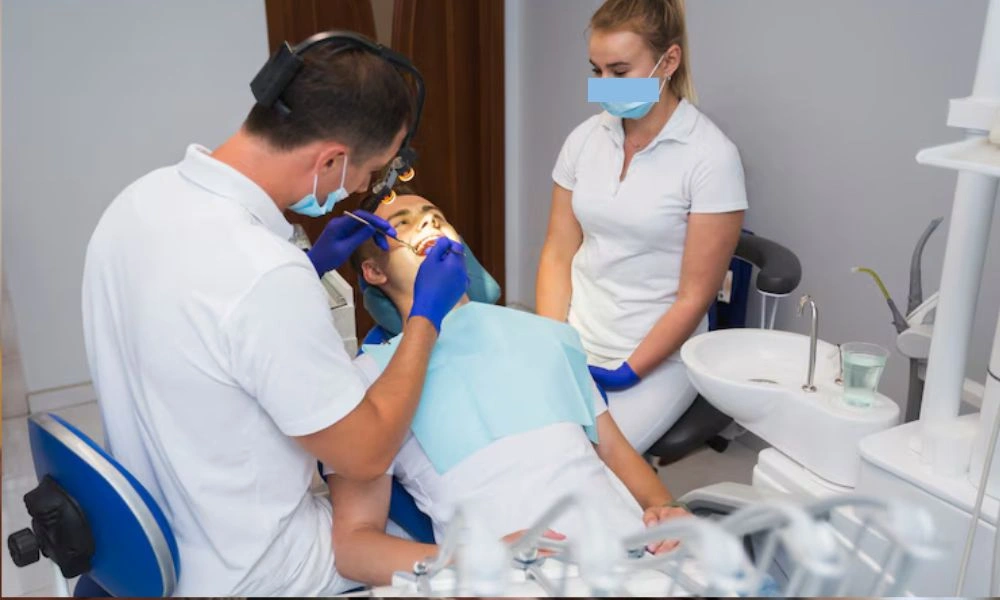
What problems do wisdom teeth usually cause dentists?
Wisdom teeth—those troublesome third molars hiding in the back of our jaws—sound wise, but are frequently more of a hassle than they’re worth. Some individuals never have a problem, but many encounter discomfort, swelling, crowding, or infection when these belated teeth choose to make their entrance.
As a software developer and the creator of Sehat Pro, I’ve collaborated with dentists, oral surgeons, and small clinics to develop a digital solution that makes managing dental patients—especially those with wisdom tooth concerns—simple and efficient.
Whether you’re a dentist looking for a trusted platform software or a clinic looking to make post-op care more efficient, this blog is going to walk you through the fundamental facts regarding wisdom teeth and demonstrate how Sehat Pro can benefit your dental practice.
What Are Wisdom Teeth and Why Do We Have Them?
Wisdom teeth are the last and third set of molars that typically erupt between the ages of 17 to 25. They were helpful to our ancestors who consumed coarse foods that needed more chewing force. Nowadays, with better diets and dental hygiene, wisdom teeth are no longer necessary.
But evolution has not kept pace with contemporary dentistry. The majority of mouths simply do not have sufficient room to accommodate these additional teeth, which creates issues.
Symptoms Your Wisdom Teeth Are Erupting
How do you recognize if your wisdom teeth are coming in? The following are the most typical signs:
- Jaw pain or tenderness at the back of the mouth
- Swollen gums, particularly at the back of your molars
- Headaches or earaches
- Bad taste or halitosis
- Trouble opening the mouth
These symptoms may be temporary or permanent but typically indicate that the wisdom teeth are shifting—and potentially becoming a problem.
Typical Wisdom Teeth Issues
Wisdom teeth may come in smoothly, but most of the time they create issues that need to be addressed. Below are the most common issues:
1. Impaction
An impacted wisdom tooth is trapped in the jaw or gums and cannot emerge properly. This can be extremely painful and lead to further complications like infection or cysts.
2. Infection
Pericoronitis, an infection of the gum tissue surrounding a partially erupted tooth, is common when food and bacteria get trapped under the gum flap.
3. Tooth Crowding
Wisdom teeth can push your current molars, making them shift and reverse years of orthodontic treatment.
4. Damage to Adjacent Teeth
The pressure from erupting wisdom teeth can hurt surrounding molars, roots, and bone tissue.
5. Cysts and Tumors
Impacted teeth that are not treated can develop cysts that can harm the jawbone and surrounding teeth, and in extreme cases, become tumors.
When to See a Dentist?
You don’t need to wait until you’re in pain. Dental specialists advise that you make an appointment if you:
- Are 16–25 years old
- Have frequent jaw or headache pain
- See swelling or redness in your gums at the back of your mouth
- Have trouble fully opening your mouth
Sehat Pro simplifies appointment booking, reminders, and assessments. With electronic records and automatic communication tools, clinics are able to cope more easily with patient care and never forget a follow-up.
The Process of Wisdom Tooth Removal
Not all wisdom teeth need to be removed, but if yours are problematic, your dentist will suggest surgery. Here’s what usually happens:
1. Consultation and Imaging
X-rays or 3D scans are employed to find where the tooth is. Sehat Pro assists the management of these records, storing them safely for future access and follow-up.
2. Preparing for Surgery
Patients are administered anesthesia—local, sedation, or general—according to the complexity of the extraction.
3. Extraction
The oral surgeon cuts through the gum and extracts the tooth, possibly in fragments. The area is cleaned and stitched.
4. Recovery
Most patients have mild bruising, swelling, and pain for a couple of days. Painkillers and post-op instructions are paramount here.
With Sehat Pro, clinics can robotize post-surgery instructions, send them through SMS or email, and monitor recovery via online consultations.
Recovery and Aftercare Tips
A stress-free recovery relies on careful aftercare. Here are some key tips you can impart to patients:
- Use ice packs in the first 24 hours
- Don’t use straws or spit
- Follow soft foods such as yogurt, soup, or potatoes
- Rinse gently with salt water after 24 hours
- Avoid smoking or strenuous exercise
By incorporating Sehat Pro into your dental clinic, you can also send automatically aftercare instructions to patients, minimizing complications and enhancing recovery outcomes.
Why Sehat Pro Is a Game-Changer for Clinics
Sehat Pro is built specifically for clinics, small hospitals, and solo dental practices that want to maximize their operations.
✅ Dental Clinic Key Features
- Patient Record Management: Manage medical history, imaging, prescriptions, and allergies.
- Appointment Scheduling: View, manage, and send scheduled reminders.
- Post-Op Automation: Send automated aftercare instructions and follow-up schedules.
- Billing and Invoicing: Transparent, seamless financial processes.
- Digital Prescriptions: Create and share prescriptions immediately with patients.
Sehat Pro enables dental professionals to have less paperwork time and more time providing quality care.
Wisdom Teeth: Myths vs. Facts
Let’s debunk some common myths:
Myth 1: All people need their wisdom teeth removed.
Fact: Only impacted or problem wisdom teeth need to be removed.
Myth 2: Wisdom teeth always cause crowding.
Fact: They can, but it’s case by case.
Myth 3: Recovery lasts weeks.
Fact: With good care, recovery typically takes a week.
Sehat Pro keeps patients well-informed with accurate, clinic-approved information that dispels misinformation and instills confidence.
What Makes Sehat Pro Stand Out?
In contrast to run-of-the-mill practice management software, Sehat Pro is specifically designed to accommodate healthcare processes, such as dental surgeries. Whether it’s patient imaging management, follow-up messaging, or records automation, Sehat Pro provides:
- A dental staff customizable dashboard
- Role-based secure data storage
- Multi-device support for mobile and desktop
- Lab test, imaging device, and billings software integration
- Cloud flexibility to work from anywhere
Conclusion
Wisdom teeth are a natural occurrence, but they usually are plagued by issues. As dentists, being proactive, up-to-date, and having the proper tools can be the difference in how you handle and provide care for patients.
With Sehat Pro, dental practices and clinics get a strong advantage. From consultations to follow-up after surgery to operations, our software makes every process simpler and easier, allowing you to provide top-notch care while staying efficient and saving time.
Frequently Asked Questions (FAQ)
Wisdom teeth typically emerge between the ages of 17 and 25. However, some individuals may never develop them, while others may experience delayed eruption or impacted teeth that never surface properly.
Dentists usually advise removal if the wisdom teeth cause pain, infection, crowding, or impaction. Using tools like Sehat Pro, clinics can streamline dental charting and quickly identify cases needing prompt attention.
Symptoms include jaw pain, swelling, difficulty opening the mouth, inflamed gums, and sometimes bad breath. Early diagnosis and digital record tracking using Sehat Pro help ensure timely intervention.
While often straightforward, complexity depends on the tooth's position and impaction level. With Sehat Pro, dental clinics can simplify pre-op planning, consent forms, and post-op care instructions.
Sehat Pro enables dentists to manage patient records, x-rays, scheduling, and follow-up care—all in one centralized system. It enhances communication between staff, improves care delivery, and boosts operational efficiency.



